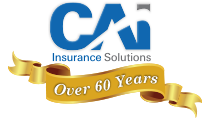While more devastating eye injuries typically affect workers within construction and manufacturing industries, desk jobs can also negatively impact your eye health. For example, staring at a computer screen for a significant portion of the workday can lead to eye strain and other potential maladies. This post provides information on eye injuries and impairments that can occur at the workplace and tips to prevent or mitigate them.
Job-Related Eye Injuries
Each day about 2000 U.S. workers sustain a job-related eye injury that requires medical treatment. About one third of the injuries are treated in hospital emergency departments, and more than 100 of these injuries result in one or more days away from work.
How do eye injuries happen to workers?
- Striking or scraping: The majority of eye injuries result from small particles or objects striking or scraping the eye, such as: dust, cement chips, metal slivers, and wood chips. These materials are often ejected by tools, windblown, or fall from above a worker. Large objects may also strike the eye or face, or a worker may run into an object causing blunt-force trauma to the eyeball or eye socket.
- Penetration: Objects like nails, staples, or slivers of wood or metal can go through the eyeball and result in a permanent loss of vision.
- Chemical and thermal burns: Industrial chemicals or cleaning products are common causes of chemical burns to one or both eyes. Thermal burns to the eye also occur, often among welders. These burns routinely damage workers’ eyes and surrounding tissue.
What can workers do to prevent eye injury and disease?
Wear personal protective eyewear, such as goggles, face shields, safety glasses, or full face respirators.
The eye protection chosen for specific work situations depends upon the nature and extent of the hazard, the circumstances of exposure, other protective equipment used, and personal vision needs. Eye protection should be fit to an individual or adjustable to provide appropriate coverage. It should be comfortable and allow for sufficient peripheral vision.

What Is Digital Eye Strain?
Digital device usage has increased substantially in recent years across all age groups, so that extensive daily use for both social and professional purposes is now normal. Digital eye strain (DES), also known as computer vision syndrome, encompasses a range of ocular and visual symptoms, and estimates suggest its prevalence may be 50% or more among computer users. Symptoms fall into two main categories: those linked to accommodative or binocular vision stress, and external symptoms linked to dry eye. Although symptoms are typically transient, they may be frequent and persistent, and have an economic impact when vocational computer users are affected. DES may be identified and measured using one of several available questionnaires, or objective evaluations of parameters such as critical flicker–fusion frequency, blink rate and completeness, accommodative function and pupil characteristics may be used to provide indices of visual fatigue.
Sheppard, A. L., & Wolffsohn, J. S. (2018). Digital eye strain: prevalence, measurement and amelioration. BMJ open ophthalmology, 3(1), e000146. https://doi.org/10.1136/bmjophth-2018-000146

Preventing Digital Eye Strain
Reducing or preventing digital eye strain can be accomplished using several different methods, including:
- Give your eyes a rest (for every 20 minutes spent looking at your computer monitor, take a 20-second break)
- Optimize lighting to reduce glare
- Keep the top of your computer monitor just beneath eye level
- Adjust your screen settings to brightness and contrast levels that feel comfortable
